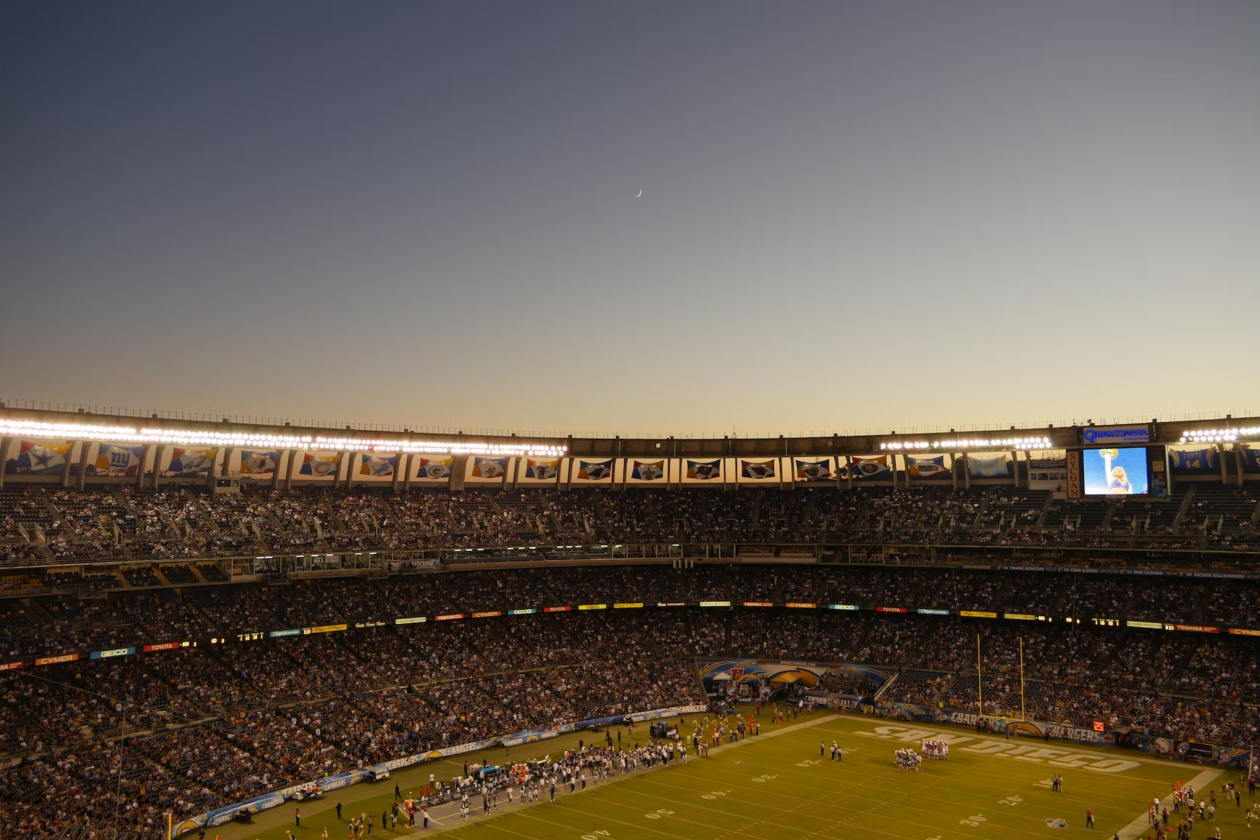As autumn leaves herald the much-anticipated return of the NFL season, the sport itself undergoes a quieter, yet equally significant transformation. The infusion of technology into the coliseum of American sports has not only revamped the game’s play mechanics but also reinvigorated how fans engage, particularly through fantasy football and platforms offering detailed FanDuel NFL odds.
This evolution has seamlessly woven into the fabric of the game, enhancing not just the viewing experience but also providing coaches and players with sophisticated health and strategy management tools. This blog post seeks to chart this technological journey from the simple leather helmets of yesteryear to today’s high-tech innovations.
Let’s explore how the NFL’s digital transformation is reshaping the modern landscape of the sport, creating a richer, more interactive fan experience and a smarter, safer game.
The Evolution of Technology in NFL Gameplay
The game of football, as played in the NFL, has always been a strategic battle, likened to chess but with a much higher physical toll. Historically, the strategy was confined to what coaches could see and communicate from the sidelines and what players could execute on the field.
Enter the era of tablets and wearables. Coaches and players can now analyze plays almost instantaneously after they happen, with tablets powered by high-speed connections feeding them a stream of data and visual insights. Wearable technology tracks player biometrics, allowing for personalized strategies to optimize performance and manage fatigue.
The “eye in the sky” — the implementation of high-definition, multi-angle cameras — has transformed how games are both played and officiated. With the advent of the replay review system, referees can now make more accurate calls, ensuring the game is fairer. This technology has not only improved the accuracy of officiating but also the safety of the players, with concussions and other injuries being scrutinized with more precision than ever before.
Technology’s Impact on Player Health and Safety
Player safety has been a contentious issue in the NFL, with the sport’s physical nature causing many injuries, some with long-term consequences. The league’s response has been multifaceted, but technology has played a pivotal role. From improved helmet designs incorporating sensor technology to track impacts to the Electronic Medical Record (EMR) systems that keep detailed health data for each player, technology is at the forefront of the NFL’s push toward greater player safety.
Also, the introduction of computer vision and machine learning to analyze player movements has the potential to not only assess injuries more effectively but also to predict and prevent them by identifying dangerous patterns and scenarios before they result in harm. Virtual reality (VR) is also being used to simulate game situations for safer training practices, reducing the physical toll on players during practice sessions.
Stadium and Fan Experience Enhancements
On the fan front, the NFL stadium experience has been revolutionized by technology. Stadiums are becoming smarter and more connected, offering fans high-speed internet access, interactive screens, and apps that allow for in-seat concession orders and even restroom wait times. The in-game experience is now augmented by immersive technologies like augmented reality (AR), which can superimpose player stats and game information directly onto the field from the fan’s viewpoint.
The home viewing experience has equally been transformed. With the advent of high-definition and ultra-high-definition broadcasts, multiple camera angles, and immersive audio, fans can experience the game with a level of detail and engagement that was once unimaginable. Fantasy football and real-time gaming have also benefited from technological advances, creating an interactive layer of engagement that extends beyond the actual games being played.
The Role of Social Media and Digital Content
Fans can now interact with teams and players in ways that were before unfeasible because of the digital age. Teams and players can communicate in real time on social media channels, where teams can post updates instantly and players can provide behind-the-scenes photos. This has improved the NFL’s visibility while also fostering a closer relationship between the team, its players, and its supporters.
In addition, the expansion of digital content has increased fan interaction, ranging from podcasts to unique web series. Fans are guaranteed round-the-clock access to content about their favorite clubs and players thanks to the league’s specialized network and streaming services. This never-ending supply of material keeps fans engaged throughout the year and expands the league’s reach beyond the conventional season.
Conclusion
The impact of technology on the NFL is as diverse as it is profound. From the league’s earliest days to the present, the integration of advanced tech has been a game of inches — each small advancement contributing to a larger shift in how the game is played, experienced, and even conceptualized. Today, as the league continues to push the boundaries of what is possible, we are witnessing the transformation of a sport, a culture, and a global community.
This technological journey mirrors the progress of society itself, reflecting our broader human story of growth, adaptation, and the relentless pursuit of excellence. The NFL’s embrace of technology assures us that, even as we reminisce about the simplicity of the game’s past, the future of football is bright, secure, and endlessly exciting, promising fans and players alike an experience that is more dynamic, engaging, and safer than ever before.


